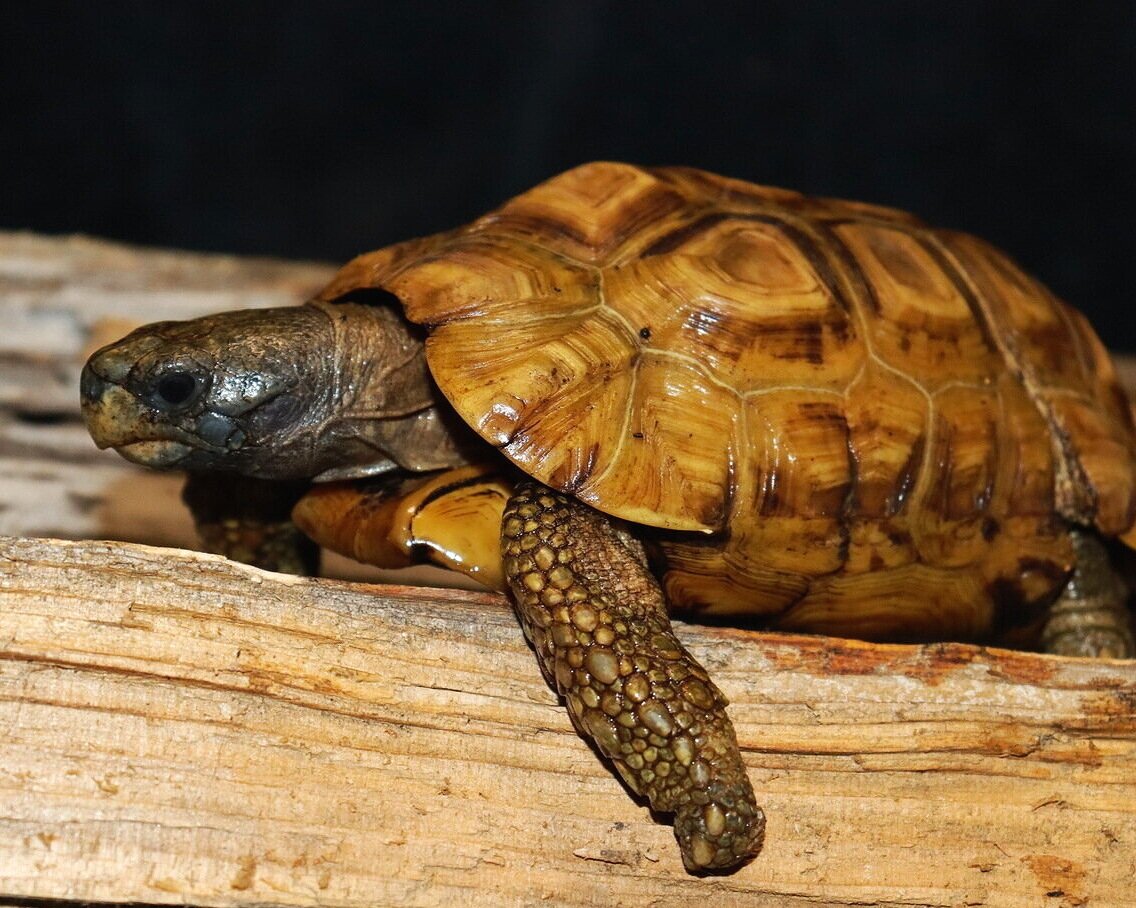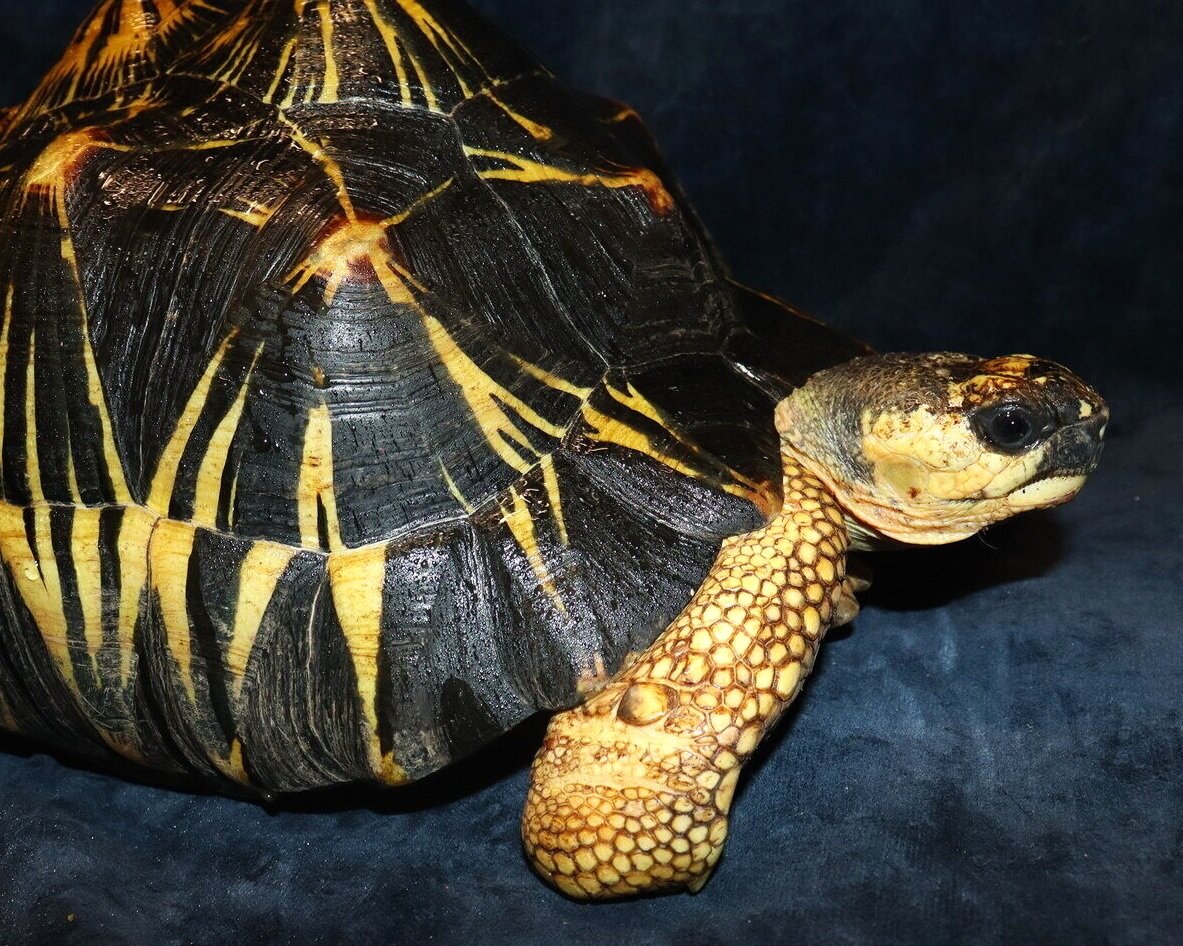Testudo horsfieldii, Afghan Tortoise, Central Asian Tortoise, Steppe Tortoise,
Four Clawed Tortoise
A small 6–10-inch tough personable tortoise that is very adaptive not needing high humidity. Natural range Russia, Afghanistan, China, Iran, Pakistan, they live in extreme conditions and may only be active for 3 mths of the year in the wild, the rest of the year they would hibernate at high elevations up to 7000ft. In captivity they are happy with either a short hibernation or equally happy without too. Russian tortoises eat a herbivorous diet and enjoy outdoor time in the summer with access to varied grazing area. Indoors they prefer a well-lit environment as it stimulates their activity levels.
Be aware that they are excellent excavators so be mindful of this when designing a safe outdoor enclosure as they can dig down into the ground a few feet deep.







